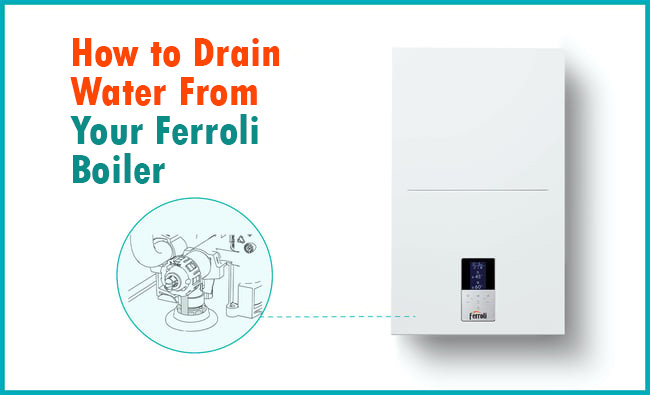Need to Replace a Part?
If you’re planning to drain your Ferroli boiler, it’s often due to maintenance, repairs, or seasonal shutdowns. At Suner, we offer a wide range of original Ferroli spare parts—available online with fast delivery.
🛠 Find expansion vessels, safety valves, pressure switches, circulation pumps, and more.
👉 Visit our store and get your Ferroli boiler back to optimal performance.
When and Why to Drain Your Ferroli Boiler

Draining your Ferroli boiler may be necessary in several scenarios:
- Before extended inactivity: If the boiler will be unused during winter, draining prevents frost damage.
- Maintenance or repairs: When servicing components in contact with water, draining ensures safety and ease of access.
- Water treatment: To replace or treat the water in the system, especially if it’s hard water that can cause scaling.FREE BOILER MANUALS+5BFF Web+5DIYnot+5
It’s essential to determine whether to drain only the boiler or the entire heating system. Use the isolation valves to control the sections being drained.
Important Considerations Before Draining
- Refilling: After draining and completing maintenance, refill the system and ensure the pressure gauge reads between 1 and 1.5 bar.
- Isolation valves: To drain both the boiler and the heating system, keep the isolation valves open. To drain only the boiler, close these valves before proceeding.
Four Methods to Drain a Ferroli Boiler
1. Using the Drain Valve
Most Ferroli boilers, including gas and oil models, come equipped with a drain valve. For example:
- BlueHelix HiTech RRT C: The drain valve is located beneath the safety valve inside the boiler.
- Atlas Eco 30 K 100 Unit: The drain valve is at the bottom of the boiler.DIYnot
Procedure:
- Turn off the boiler and allow it to cool.
- Place a suitable container beneath the drain valve.
- Open the valve by turning it counterclockwise by hand (avoid using tools to prevent damage).
- Allow the water to drain completely.
2. Through Radiator Bleed Valves
If your boiler lacks a drain valve, you can use the bleed valves on the radiators:
- Turn off the boiler and let it cool.
- Start with the lowest radiator in the system.
- Place a container beneath the bleed valve.
- Open the valve using a radiator key or screwdriver.
- Once water stops flowing, close the valve and proceed to the next radiator.
3. Using an External Drain Pump
For larger systems, an external drain pump can expedite the process:
- Connect the pump to the system following the manufacturer’s instructions.
- Ensure all valves are open to allow complete drainage.
- Operate the pump until all water is removed.
4. Via the Safety Valve (Not Recommended)
This method should be a last resort, as it may damage the safety valve:
- Turn off the boiler and let it cool.
- Place a container beneath the safety valve.
- Open the valve carefully to release water.
- Be prepared to replace the safety valve afterward, as it may not reseal properly.
Conclusion
Draining your Ferroli boiler is a straightforward process when done correctly. Whether you’re preparing for seasonal shutdowns, performing maintenance, or treating the system water, choosing the appropriate method ensures safety and efficiency. Always remember to refill and repressurize the system after draining, and consult a professional if you’re unsure about any step.

